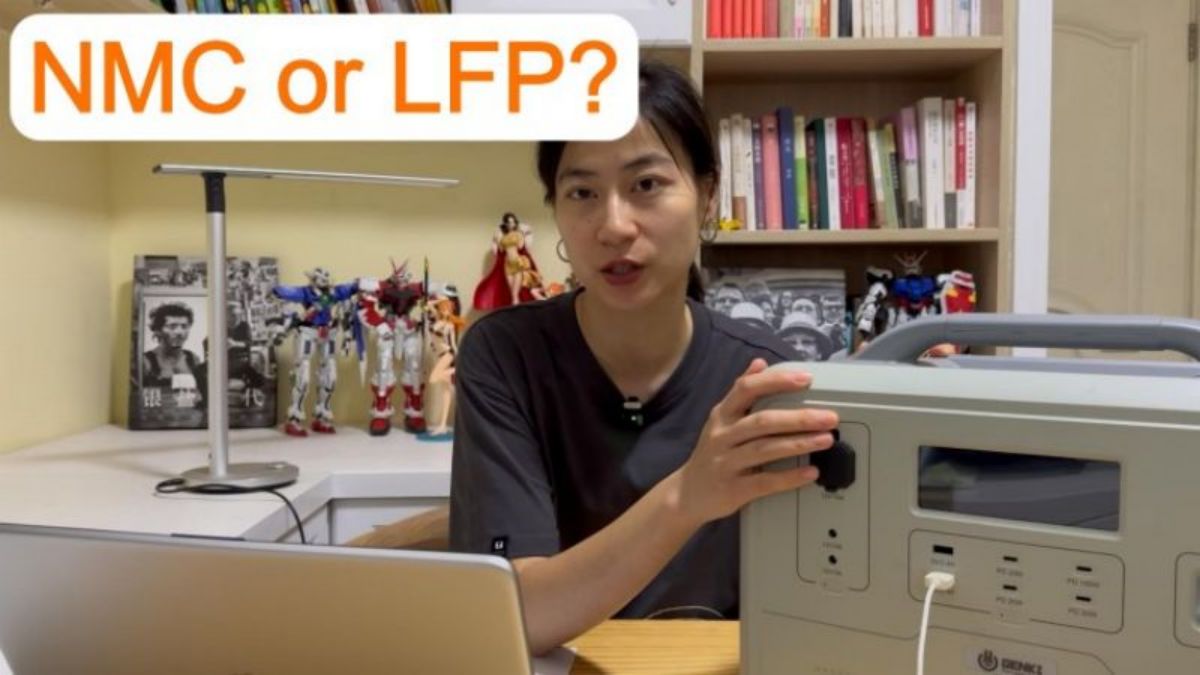
Currently in the market, many brands use lithium batteries in portable power station. And there are two main battery chemistries, Nickel Manganese Cobalt (NMC)and lithium iron phosphate (LFP).
For example, we can find that LFP for EcoFlow river 2 pro, Anker power house 555 and Bluetti AC200P, NMC for Goalzero YETI1500X and EcoFlow DELTA mini. By the way, I can’t tell which chemistry of Jackery’s products because it just says Lithium-ion.
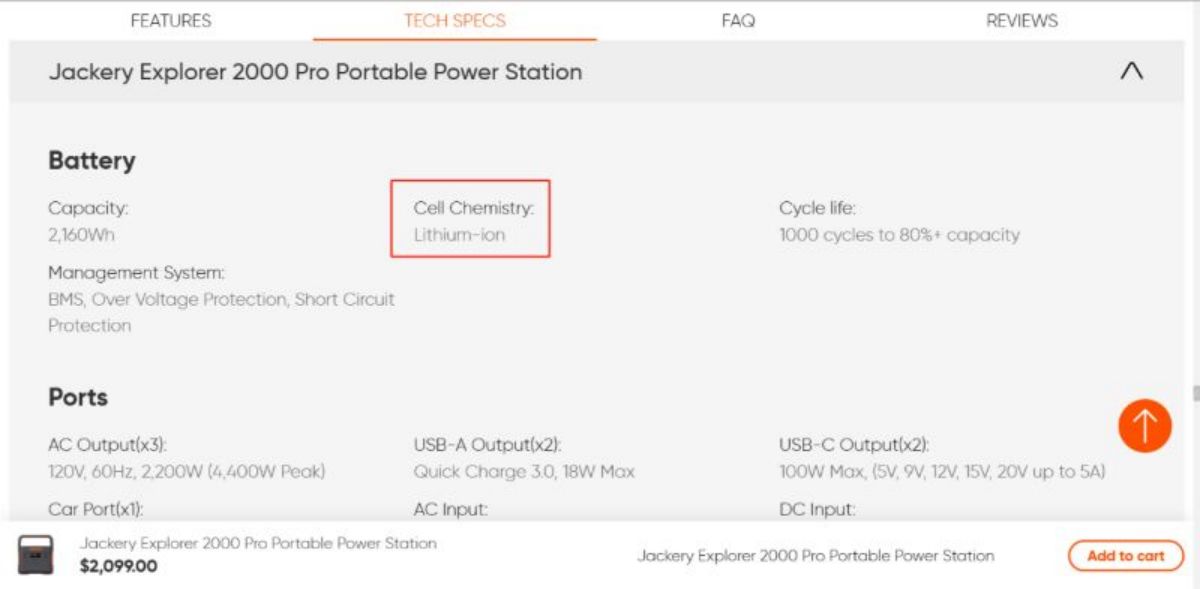
So here is the question, Which battery chemistry to choose when buying a portable power station?
Before answering this question, we first need to find out the chemical characteristics of these two types of batteries and make purchasing choices based on our actual needs. We will compare the two from three aspects: energy density, safety, and cycle life.
So the first difference is energy density, I will use Growatt as an example to illustrate. These specifications are taken from Growatt website. With same dimension, the NMC based 1500 has a capacity 1512wh, and weighs 33 pounds, and the LFP based 1300’s capacity is 1382wh but weighs 42 pounds. So, typically NMC batteries have a higher energy density compared to LFP batteries. This means they can store more energy per unit weight or volume, resulting in longer battery life and higher power output.
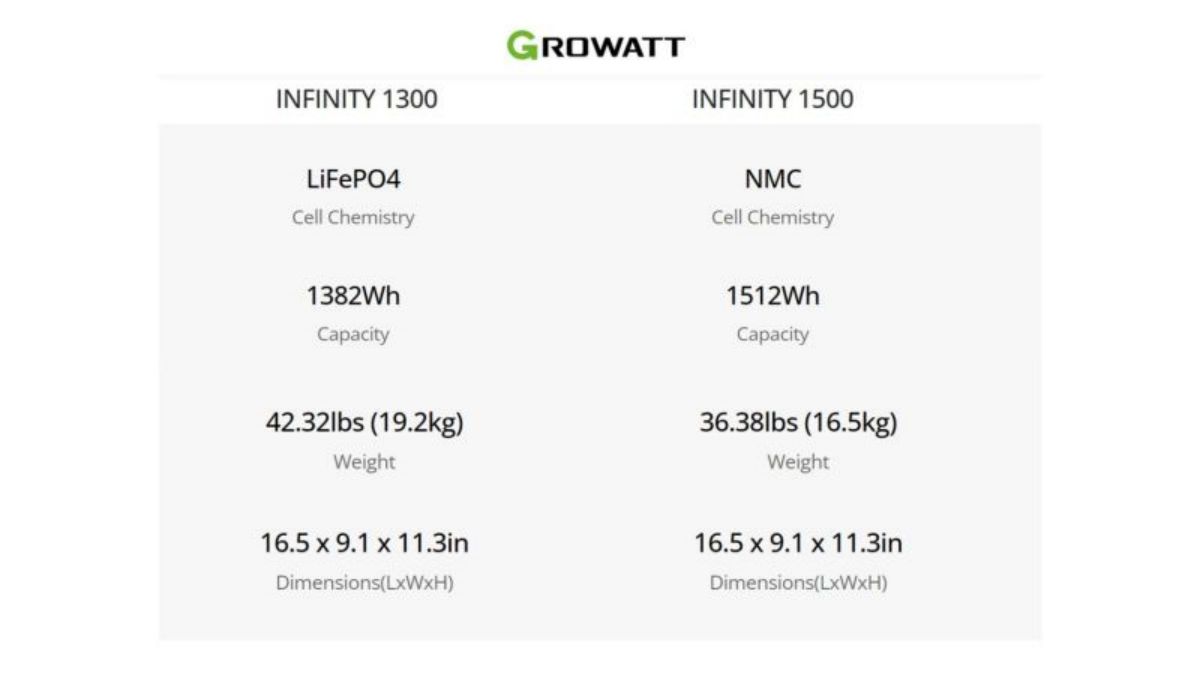
GROWATT's models
The second difference is safety. NMC batteries generally have good safety features, but they are more prone to thermal runaway and potential fire hazards, especially when exposed to high temperatures or physical damage. Manufacturers incorporate various safety mechanisms to mitigate these risks, such as advanced battery management systems(BMS).
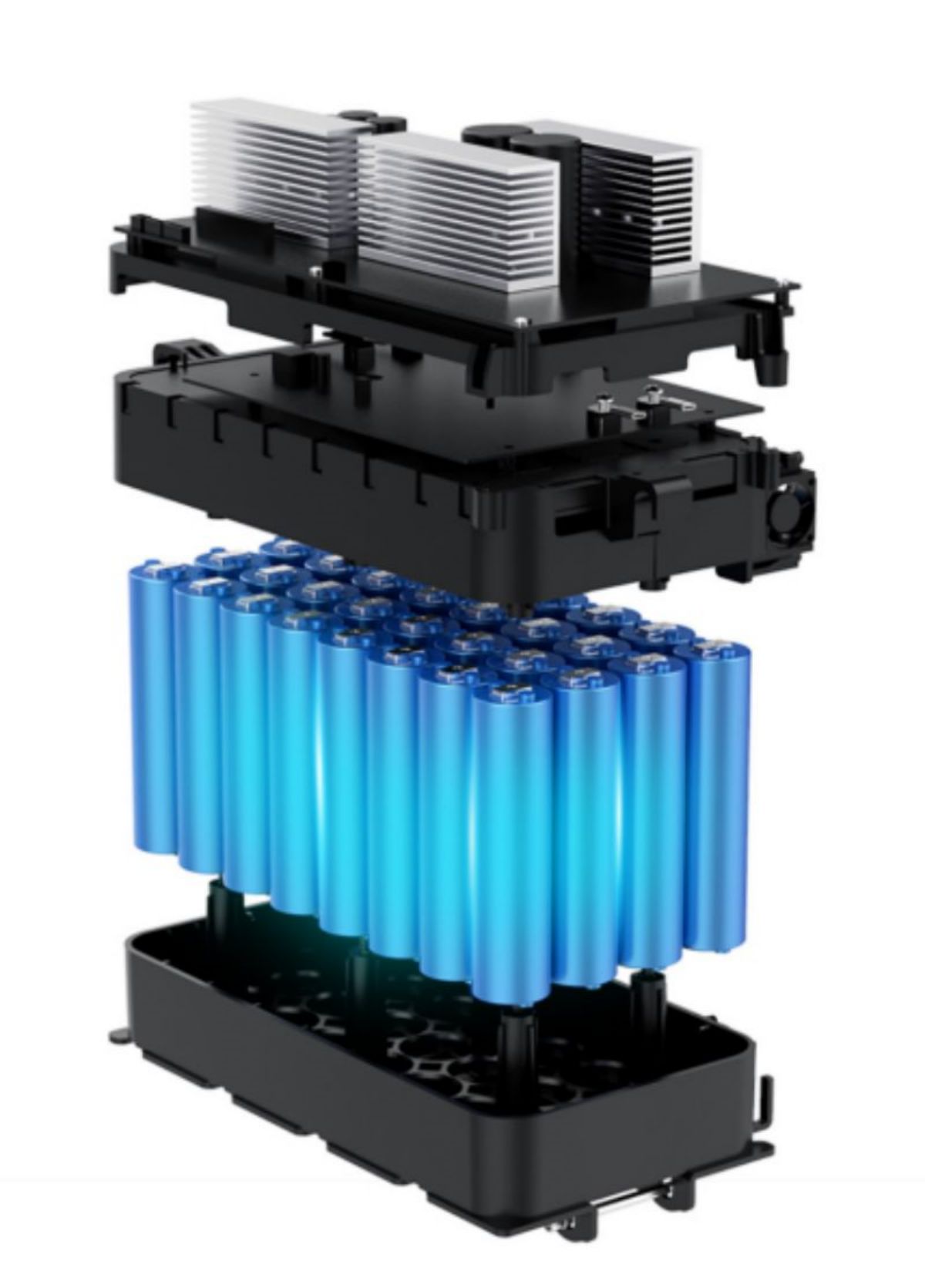
LFP batteries are considered safer than ternary lithium batteries. They have a higher thermal stability and are less likely to overheat or catch fire. Iron phosphate has a lower tendency to decompose at high temperatures, contributing to the overall safety profile of the battery.
So for portable power station, NMC and LFP batteries are no big difference in safety because of advanced BMS.
The last main difference is cycle life. Check out this form, I have listed several popular models and Genki's parameters, you will find that LFP models like Genki’s are rated for 3000 cycles down to 80% capacity, and the NMC models are 500 cycles. A cycle means it starts at 100 going all the way to 0, back up to 100%, that’s one cycle. So if you did that every day, you can use LFP based products over 9 years. You’re going to get almost 6 times longer than NMC based power stations.
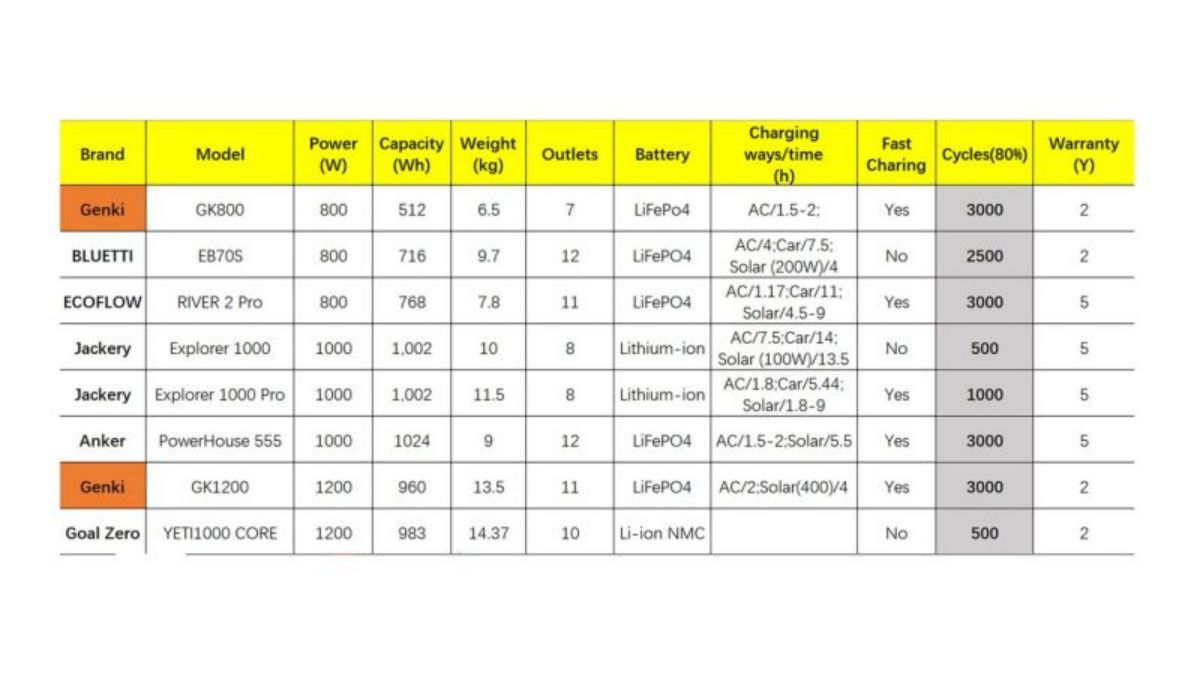
Parameter comparison
So in a summary, NMC batteries have higher energy density than LFP, and LFP batteries have longer lifespan than NMC, and they are both have excellent safety performance due to the advances battery management system.
Back to the question, Which battery chemistry to choose when buying a portable power station? NMC or LFP? Choose products that are suitable for you based on your actual needs and price budget.
Post time: Sep-18-2023
